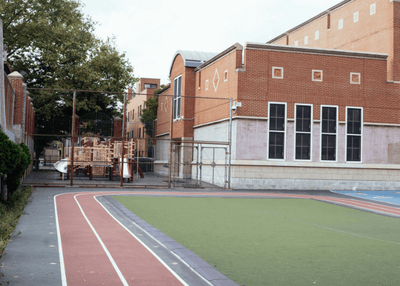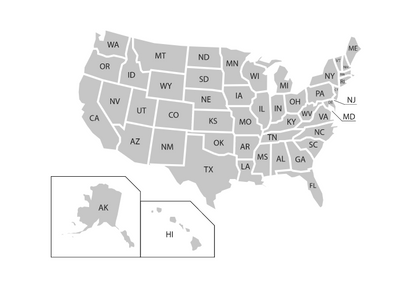Water Quality InformationWritten By Actual Experts
RSSStagnant Water and Lead in School Pipes Are a Health Risk To Children

Problems We Found in Fairfax County, Virginia’s Drinking Water

New York Passes Bill To Reduce Lead In School Drinking Water

Christina Liu | Hydroviv Science Team
The New York State Legislature recently passed a bill to help make drinking water in schools safer. National Resources Defense Council (NRDC) reported that this bill lowers the Action Level of lead detected at school drinking water taps from the current EPA Action Level of 15 parts per billion (ppb) down to 5 ppb, which is the bottled water lead concentration limit set by the Food and Drug Administration (FDA). The EPA, CDC and the American Academy of Pediatrics (AAP) all recognize that there is no safe level of lead for children. However, the 5 ppb Action Level is much closer to the recommended lead level recommended by the AAP of 1 ppb, so it is a major step forward in helping New York school children access safer drinking water in schools.
Is Your City In NRDC's Latest Lead Contamination Report?

Christina Liu | Scientific Contributor
The Natural Resources Defense Council (NRDC) released a recent analysis of EPA lead data. NRDC found that 186 million people across the United States were exposed to elevated lead levels through their drinking water systems.The EPA, CDC and the American Academy of Pediatrics all recognize that there is no safe level of lead for children. This article breaks down important findings from this study and what they mean for your drinking water.
1. Lead in Drinking Water Is a Significant Issue in Many Parts of the Country
- 186 million people in the United States between January 1, 2018 and December 31, 2020 drank water that exceeded the pediatrician recommended maximum lead level of 1 part per billion (ppb).
- 28 million people were served by drinking water systems that totaled 12,892 lead violations.
- Seven million people drank water that exceeded EPA’s Lead Action Level of 15 ppb.
- The CDC and the American Academy of Pediatrics have stated that there is no safe level of lead for young children. The EPA has also set the maximum contaminant level goal (MCLG) for lead in drinking water at 0 parts per billion because lead can be harmful to human health even at low exposure levels.
2. Do Federal Laws Protect You From Lead Exposure in Drinking Water?
Unfortunately, no. The Lead and Copper Rule (LCR) was first enacted in 1991 and has seen minimal changes since then. It is the only major regulation aimed at protecting the public from lead exposure in drinking water. It does however contain loopholes, exemptions, and regulatory flaws which demonstrate that the LCR does not necessarily prioritize human health. The most obvious and deceptive flaw is the 90th percentile rule, which states that only 90% of samples must meet EPA’s 15 part per billion “Action Level (AL)” threshold. This means that 10% of samples can exceed the AL threshold and still be in compliance with the law.
3. My Water Source is Completely Clean. Do I Still Have To Worry About Lead?
Lead contaminates tap water differently than most pollutants, because lead comes from plumbing - not the water supply. Water leaving the treatment plant can be entirely lead-free but becomes contaminated once it hits older infrastructure. For example, some buildings in older neighborhoods have lead-containing service pipes that connect water mains to the residential plumbing, and plumbing installed before 1986 often used lead-containing solder to join copper pipes. If corrosion control measures fail (what happened in Flint, MI), lead can leach from the pipes into the tap water. This problem is exacerbated when water sits stagnant for several hours before use (e.g. overnight or while resident is at work), because lead concentrations rise as corrosive water sits in the pipes.
Case Study: New York City
New York City provides municipal tap water for more than half the population of New York, through an impressive network of 19 reservoirs and 3 lakes. New York City’s tap water is widely recognized in the water industry as the “Gold Standard” for urban water providers (it’s truly an engineering feat on an unimaginable scale). However, even if the water leaves the reservoirs and water plants lead-free, lead contamination occurs when the water encounters aging pipes and connections that contain lead. In the table below you’ll notice several samples are well over the federal Action Level - some are over 300 times higher than the 15 part per billion threshold.
Table 1. New York City lead levels from 2007 - 2022
4. Does The American Jobs Infrastructure Plan Go Far Enough To Reduce Lead Exposure?
The American Jobs Plan includes $111 billion in funding for water infrastructure. $45 billion of this is being allocated to eliminate ALL lead pipes and service lines. That is a significant promise, but not a lot of money with which to accomplish this. An estimated 6-10 million homes in the U.S. still receive their drinking water from a lead pipe or lead service line. In addition, the process of replacing city-wide distribution lines will be invasive and time-consuming. It involves digging up streets, section by section, across an entire city. Individual homeowners also need to hire a specialist to replace their lead service lines to avoid potential exposure to this known neurotoxin. Also, lead levels increase for the first few months after a service line is replaced. We have an article that goes in depth as to why this is, which you can find here. Unfortunately, if you currently have lead service lines that bring water to your home, while you may experience relief (new pipes) in the future, this won’t be an immediate fix.
What can I do?
-
Get informed. Look up the water quality report in your area. See if your water supplier is one of the ones mentioned in the NRDC study. Information on lead in drinking water, testing methods, and steps you can take to minimize exposure is available from the Safe Drinking Water Hotline or on the EPA’s page: Basic Information about Lead in Drinking Water.
-
Get your water tested for lead. Many cities have free lead testing kits or lead testing services. Check your city’s website or water quality report for information. Please take advantage of these resources if they are available to you.
-
Flush your tap before using water for consumption. If your water has been sitting for over six hours, minimize the potential for lead exposure by flushing your tap for a minimum of 5 minutes before using water for drinking or cooking.
-
Use cold water. Use only cold water for drinking, cooking and making baby formula. Hot tap water is known to cause lead to leach from your home's pipes.
-
Check your Filters. If you are using a filter for your drinking water, please verify that it is certified for lead removal.
How Can Hydroviv Help Me?
Hydroviv is a water filtration company that uses water quality data to optimize water filters for each customer's water. In addition to lead, we use the water quality data for each location to determine what we consider to be major “points of emphasis” that we use to build water filters that are built specifically for municipal water in your area as well as for private wells.
If you’re interested in learning more about water filters that have been optimized for your municipal tap water or private well, or just have questions about water quality in general, feel free to visit www.hydroviv.com, reach out by email (hello@hydroviv.com) or through our live chat. We post water-related news on Twitter, Instagram, and Facebook.
Hydroviv's drinking water filters carry NSF certifications to Standard 42 (aesthetic effects--Chlorine Removal) and Standard 53 (health effects--Lead, VOCs, and PFOA/PFOS removal), and are independently tested to remove hundreds of contaminants.
Other Articles We Think You Might Enjoy:
PFAS and The Safe Drinking Water Act
Disinfection Byproducts in Drinking Water: Toxicity, History, and Policy
Does Boiling My Water Purify It?
Lead and Copper Rule: What You Need to Know

Analies Dyjak | Policy Nerd
Updated 12/8/23 to include EPA's new Proposed Lead and Copper Rule Improvements
Since 1991, the Lead and Copper Rule (LCR) has aimed to regulate public drinking water systems by specifically targeting lead and copper contamination. It was created by Congress to protect human health, but there are several exemptions and loopholes that compromise its overall mission. Additionally, it’s still considered to be one of the most complicated environmental statues. This article discusses the major insufficiencies of the Lead and Copper Rule, as well as recommendations to protect your family from drinking water contamination.
How Does Lead Enter Tap Water?
Lead enters tap water through old lead service pipes and plumbing including fixtures and fittings that contain lead. Water that leaves a treatment plant may be in compliance with current EPA standards, but can become contaminated once it enters older infrastructure including an estimated 9.2 million lead service lines that serve water to properties in communities across the United States. Houses built before 1986 were most likely built with lead pipes and lead plumbing.
What are the Health Effects of Lead Contamination in Drinking Water?
The EPA, the Centers for Disease Control and Prevention (CDC), and the American Academy of Pediatrics all agree that there is no known safe level of lead in a child's blood. Even though an action level of 15 parts per billion is currently in place, that is not considered a safe level for children. The regulatory and medical organizations all agree that the only safe level of lead is zero. The scientific community and most regulatory agencies have acknowledged this, but municipalities still follow an extremely high threshold of lead in drinking water. A dose of lead that would have little to no impact on adults can have a significant and lifelong impact on an infant or child. They are the most sensitive population in the case of lead because it’s a neurotoxin and healthy brain development between the years of 0-5 is crucial. Learning disabilities, shorter stature, hearing impairment, and impairment of the formation and function of blood cells are just some of the health effects in children. Pregnant Women are also sensitive to lead contamination in drinking water. Lead accumulates in bones where it’s stored with calcium. Lead is released from bones in the form of maternal calcium which is used to help develop the fetus. Lead can also enter the placenta and have serious developmental effects on the fetus.
What is the Lead and Copper Rule?
The EPA's Lead and Copper Rule (40 CFR Part 141 Subpart 1) is part of the National Primary Drinking Water Regulations under the Safe Drinking Water Act. The rule governs 68,000 public water systems across the United States, and has created provisions to help reduce lead and copper throughout community water systems. While the goals of this statute are in good faith, there are several loopholes, exemptions, and regulatory flaws that don’t necessarily prioritize human health. The most obvious and deceptive flaw is the 90th percentile rule. Only the 90th percentile of users must meet the EPA threshold of 15 parts per billion ( 0.015mg/L ) for lead and 1.3mg/L 1.3 parts per billion (1.3mg/L) for copper. This means that 10% of users can be in exceedance of the threshold and still be in compliance with the law.
What are the Sampling Requirements Under the Lead and Copper Rule?
There are many other components of the EPA's Lead and Copper Rule that leave users confused about what’s in their water. The most profoundly disappointing part of the Lead and Copper Rule is the municipal sampling requirements. The sampling protocol requires municipalities to collect a set number of residential samples, rather than a percentage of households within a community. For example, if a public water system services 100,000 people, they are only required to collect 100 samples, rather than a percentage of the total population. Municipalities that have 10,000-100,000 residents are required to collect 60 samples and municipalities with 3,301-10,000 residents are only required to collect 40 samples. Houses built before 1986, (when the use of household lead pipes became illegal), were most likely built with lead infrastructure. The bottom line is, very few households are made aware of lead contamination. In addition, a public water system servicing less than 50,000 people can be eligible for “reduced monitoring” which decreases the number of samples they are required to collect. Reduced monitoring means that municipalities are only required to collect residential tap water samples once every 3 years. Systems that service 3,300 or fewer people can receive a waiver from the state allowing them to test for lead and copper once every 9 years. 9 years is an unreasonably long time between tests for drinking water quality. Lead concentrations can change overnight, especially if source water or corrosion control measures change.
Who Regulates Lead In Drinking Water?
Municipalities must disclose information about lead and copper in their drinking water to State officials and residents in the form of annual Consumer Confidence Reports. In 2007, revisions were made to the statute that sought to improve transparency between local, state, and federal agencies. The 2007 revisions to the EPA's Lead and Copper Rule require municipalities to notify either state or federal agencies if they have plans to change their treatment methods/source water, or anything else that might in any way increase the corrosion potential of lead. The lead agency is then required to approve these changes before they are implemented. Through this revision, municipal water providers must also notify residents about changes that may affect lead levels. The 2015 lead crisis in Flint, Michigan often comes to mind in this context. It’s important to note that the crisis in Flint occurred after this revision. Protocols were in place, yet regulatory agencies still failed to communicate.
How Are Water Samples Collected and Tested For Lead?
The Lead and Copper Rule developed a sampling protocol for both pre-selected and voluntary households. Municipalities initially pre-select “Tier 1” sites, which are older homes that most likely contain lead lines. However, homeowners can deny testing or fail to submit a sample if they choose to do so. If an inadequate number of Tier 1, Tier 2, or Tier 3 samples are collected, the municipality will then draw samples from “representative sites.” At these sites, local officials are in complete control of how samples are collected. The Lead and Copper Rule requires a 1 liter “first draw” sample, which is water that has been stagnant in plumbing for at least six hours. Samples should be taken from a tap that’s typically used for consumption of drinking water.
Invalidating Lead-Containing Water Samples
A state agency has the authority to invalidate sampling if; the laboratory establishes improper sample analysis causing erroneous results, the state determines that the sample was taken from a site that did not meet the site selection criteria, the sample was damaged in transit or if “there is substantial reason to believe that the sample was subject to tampering.” Essentially, state laboratories can omit samples for a whole breadth of reasons. Several municipalities have been caught cheating the system by discarding samples with high lead levels. Some municipalities instruct residents to “pre-flush” and allow their taps to run for five minutes the night before sampling. This helps to clear stagnant water which completely defeats the purpose because “pre-flushing” has been cited as an effective way to reduce lead levels in drinking water. Other municipalities have told residents to wait until their water “runs cold” before testing, which accomplishes the same thing as pre-flushing.
Are Municipalities Required to Replace Lead Service Lines?
If 10% of water samples exceed the 15 part per billion action level after corrosion control and source water treatment requirements have been met, a municipality must replace 7% of lead service lines per year. Line replacements stop whenever new samples meet the lead action level for two consecutive monitoring periods. Monitoring periods can be anywhere from 6 months, 1 year, 6 years, or even up to 9 years is smaller communities. Once samples exceeding the action level are detected, the system has 12 months after the end of the monitoring period, to submit documents to the state that lay out an action plan.
Current Efforts to Update the Lead and Copper Rule
On November 30, 2023, the U.S. Environmental Protection Agency (EPA) announced new proposed Lead and Copper Rule Improvements.
Key provisions in the proposal include:
- 100% Lead Pipe Replacement within 10 years.
- Locating Legacy Lead Pipes. Water systems are currently required to provide an initial inventory of their lead service lines by October 16, 2024. Under the proposal, all water systems would be required to regularly update their inventories, create a publicly available service line replacement plan, and identify the materials of all service lines of unknown material.
- Improving Tap Sampling. The proposal would make key changes to protocols that water systems must use for tap sampling informed by best practices.
- Lowering the Lead Action Level. EPA is proposing to lower the lead action level from 15 µg/L to 10 µg/L. When a water system’s lead sampling exceeds the action level, the system would be required to inform the public and take action to reduce lead exposure while concurrently working to replace all lead pipes. For example, the system would install or adjust corrosion control treatment to reduce lead that leaches into drinking water.
- Strengthening Protections to Reduce Exposure. Water systems with multiple lead action level exceedances would be required to conduct additional outreach to consumers and make filters certified to reduce lead available to all consumers.
EPA anticipates finalizing the Lead and Copper Rule Improvements prior to October 16, 2024.
Our Take
We need ways to incentivize voluntary lead testing for homeowners as well as at the municipal level. Right now many municipalities may be unaware of lead problems within a community, or overlook these concerns due to the cost of mitigation, because some municipalities legitimately don’t have the funding to properly address longstanding infrastructure issues. In a regulatory sense, the EPA's Lead and Copper Rule has been a convoluted mess. There are so many exemptions and loopholes, and the regulated sampling techniques offer little to no accuracy to what’s in people’s tap water. While the updates to the Lead and Copper Rule are a step in the right direction, actual improvements in water quality in many communities could still be decades away. Here are some recommendations on how to reduce lead exposure from our Water Nerds:
-
Allow your faucet to run for 2 minutes prior to drinking tap water.
-
See if your city or town has a free lead testing program. Washington D.C., New York City, and several other cities have a free lead testing program. If you live in an area that doesn’t have free lead testing, you can pay to send your sample to get laboratory tested.
-
Purchase a filter that is optimized and certified to remove lead from water.
Other Articles We Think You Might Enjoy:
Lead: What You Need To Know About This Toxic Heavy Metal With A Long HistoryThings To Know Before Replacing Your Home's Lead Service Pipes
How To Tell If Your Home Has Lead Plumbing or Lead Fixtures






